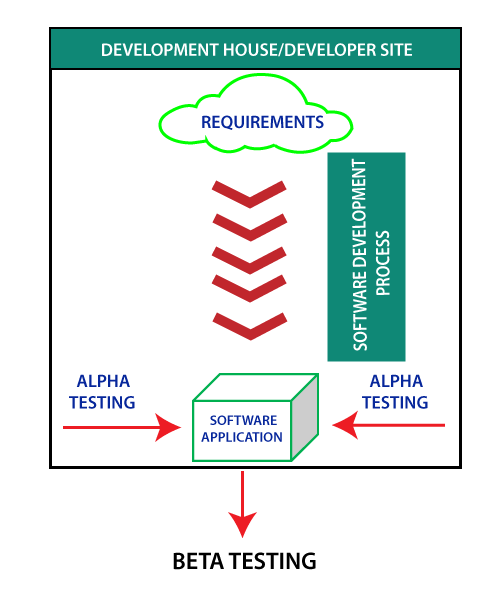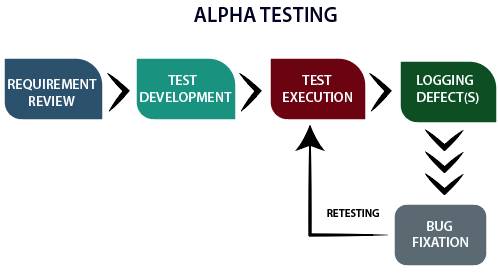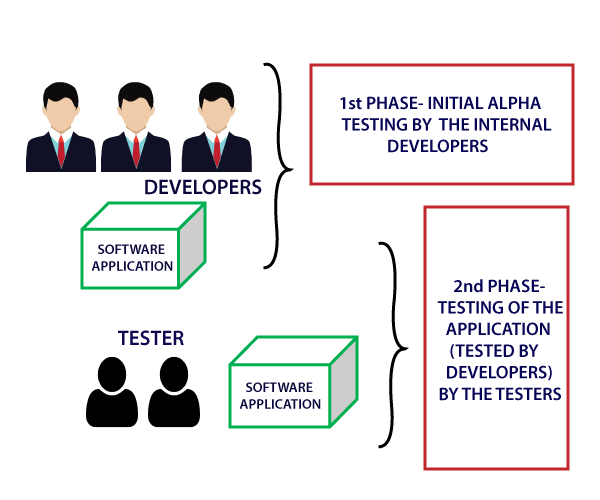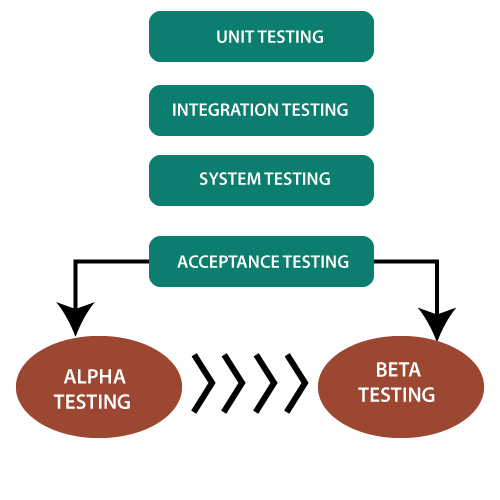Alpha Testing Introduction

Alpha testing is conducted in the organization and tested by a representative group of end-users at the developer’s side and sometimes by an independent team of testers.
Alpha testing is simulated or real operational testing at an in-house site. It comes after the unit testing, integration testing, etc. Alpha testing used after all the testing are executed.
It can be a white box, or Black-box testing depends on the requirements – particular lab environment and simulation of the actual environment required for this testing.

What is the alpha testing process?
Alpha testing follows the following process:
- Requirement Review: Review the design of the specification and functional requirement
- Test Development: Test development is base on the outcome of the requirement review. Develop the test cases and test plan.
- Test case design: Execute the test plan and test cases.
- Logging Defects: Logging the identified and detected bug found in the application.
- Bug Fixation: When all the bugs are identified and logged, then there is a need to fix the bug.
- Retesting: When all the issues are solved, and fixed retesting is done.

What are the phases of alpha testing?
Alpha testing ensures that the software performs flawlessly and does not impact the reputation of the organization; the company implements final testing in the form of alpha testing. This testing executed into two phases.

There are two phases of alpha testing.
First Phase: In-house developers of software engineers do the first phase of testing. In this phase, the tester used hardware debugger or hardware aided debugger to catches the bugs quickly. During the alpha testing, a tester finds a lot of bugs, crashes, missing features, and docs.
Second Phase: The second phase involves the quality assurance staff performs the alpha testing by involving black box and white box techniques.
When to perform alpha testing?

Alpha testing is user acceptance testing. Alpha testing performed once the product has gone through stages of testing and prepared for release. It is executing before beta testing, which is also a part of acceptance testing and can define as field testing. During this testing, we can make changes in the software to improve its quality and functionality. Alpha testing done from the developer’s site where independent developers can monitor and record user experience and make necessary changes to enhance the performance.
What are the reasons to perform Alpha Testing?
Alpha testing is the final stage of the testing. Alpha testing is an essential and popular testing technique that helps the team to deliver quality and useful software. This testing performed before the release of the product. Alpha testing can define as the first round of independent testing that ensures that the software run as per the requirement plan.
Reasons for alpha testing are:
- Refines the software product by finding and rectifying bugs that weren’t discovered through previous tests.
- Alpha testing allows the team to test the software in a real-world environment.
- One of the reasons to do alpha testing is to ensure the success of the software product.
- Alpha testing validates the quality, functionality of the software, and effectiveness of the software before it released in the real world.
What are the features of Alpha Testing?
- Alpha testing is a type of acceptance testing.
- Alpha testing is happening at the stage of the completion of the software product.
- Alpha testing is in the labs where we provide a specific and controlled environment.
- Alpha testing is in-house testing, which is performed by the internal developers and testers within the organization.
- There is not any involvement of the public.
- Alpha testing helps to gain confidence in the user acceptance of the software product.
- With the help of black box and white box technique, we can achieve the alpha testing.
- Alpha testing ensures the maximum possible quality of the software before releasing it to market or client for beta testing.
- Developers perform alpha testing at developer’s site; it enables the developer to record the error with the ease to resolve found bugs quickly.
- Alpha testing is doing after the unit testing, integration testing, system testing but before the beta testing.
- Alpha testing is for testing the software application, products, and projects.
What are the advantages of Alpha Testing?
Advantages of alpha testing are:
- One of the benefits of alpha testing is it reduces the delivery time of the project.
- It provides a complete test plan and test cases.
- Free the team member for another project.
- Every feedback helps to improve software quality.
- It provides a better observation of the software’s reliability and accountability.
What are the disadvantages of Alpha Testing?
Disadvantages of alpha testing are:
- Alpha testing does not involve in-depth testing of the software.
- The difference between the tester’s tests the data for testing the software and the customer’s data from their perspective may result in the discrepancy in the software functioning.
- The lab environment is used to simulate the real environment. But still, the lab cannot furnish all the requirement of the real environment such as multiple conditions, factors, and circumstances.
Wrap Up:
Every software product needs to undergo a vital methodology before going into a highly competitive market. Alpha testing is one of the vital testing. It needs to be considered by going through the functionality of the software and achieve the confidence in its user acceptance for the real environment, before releasing it into the market.
